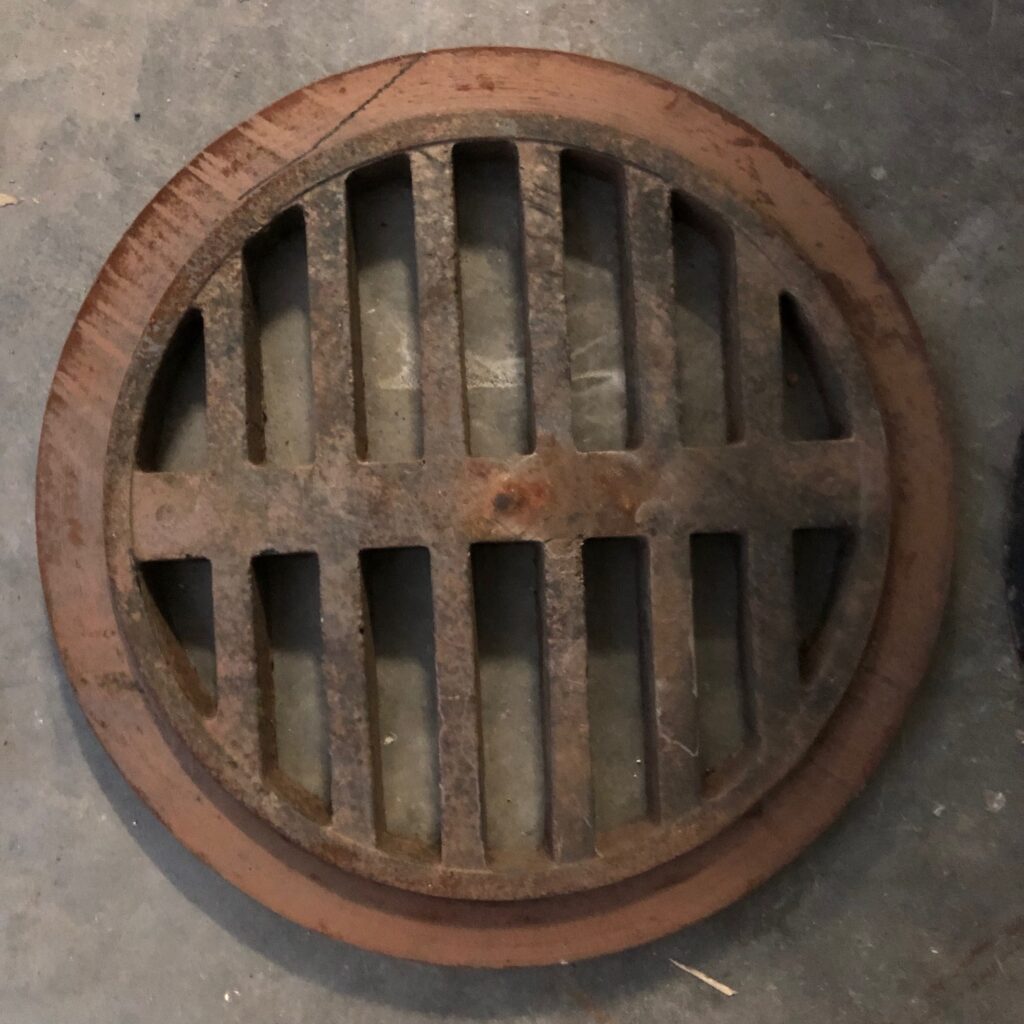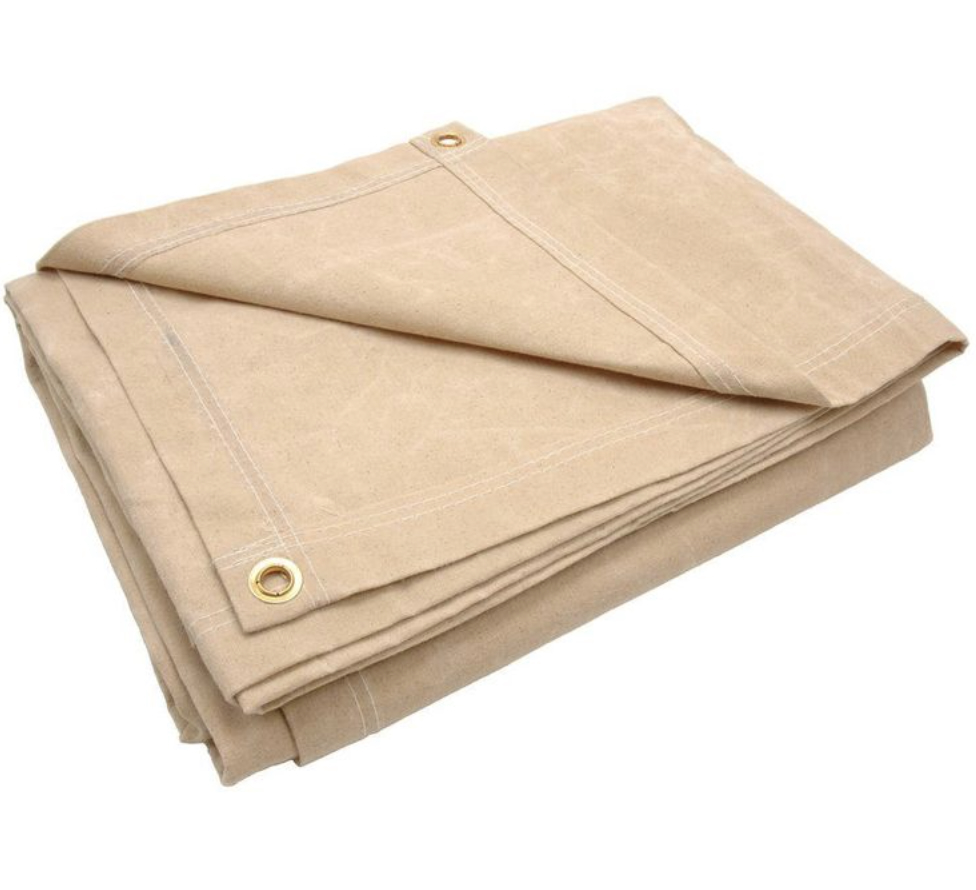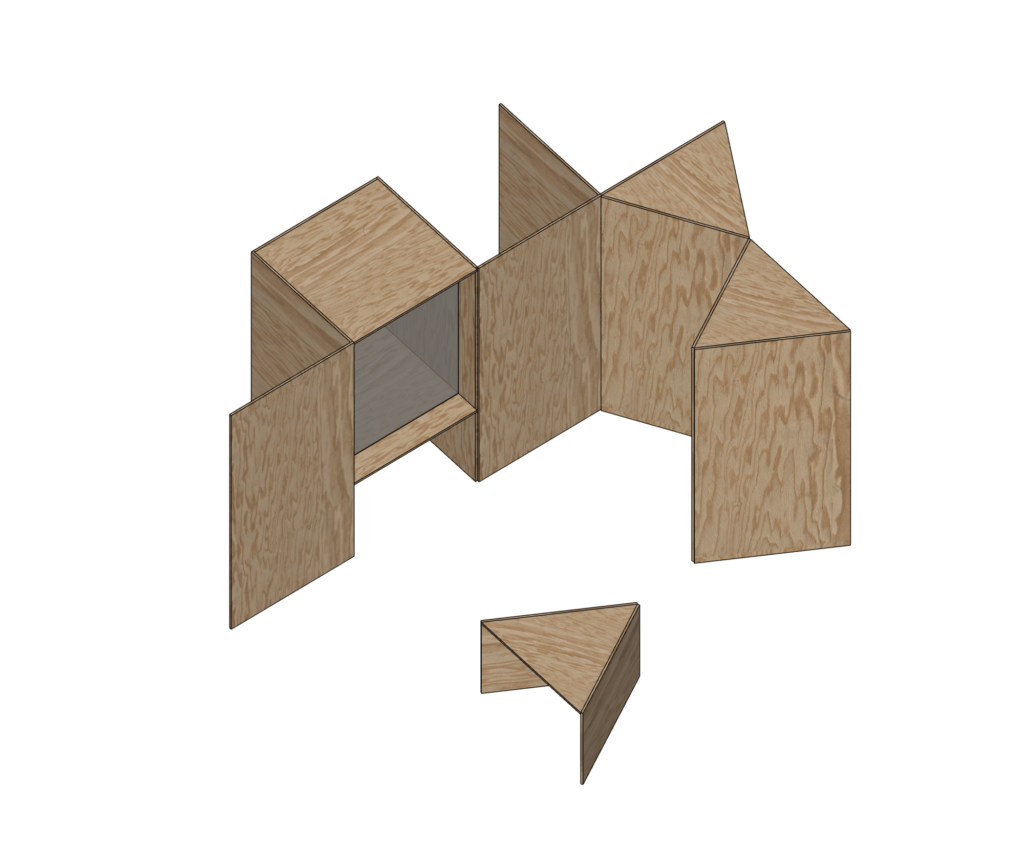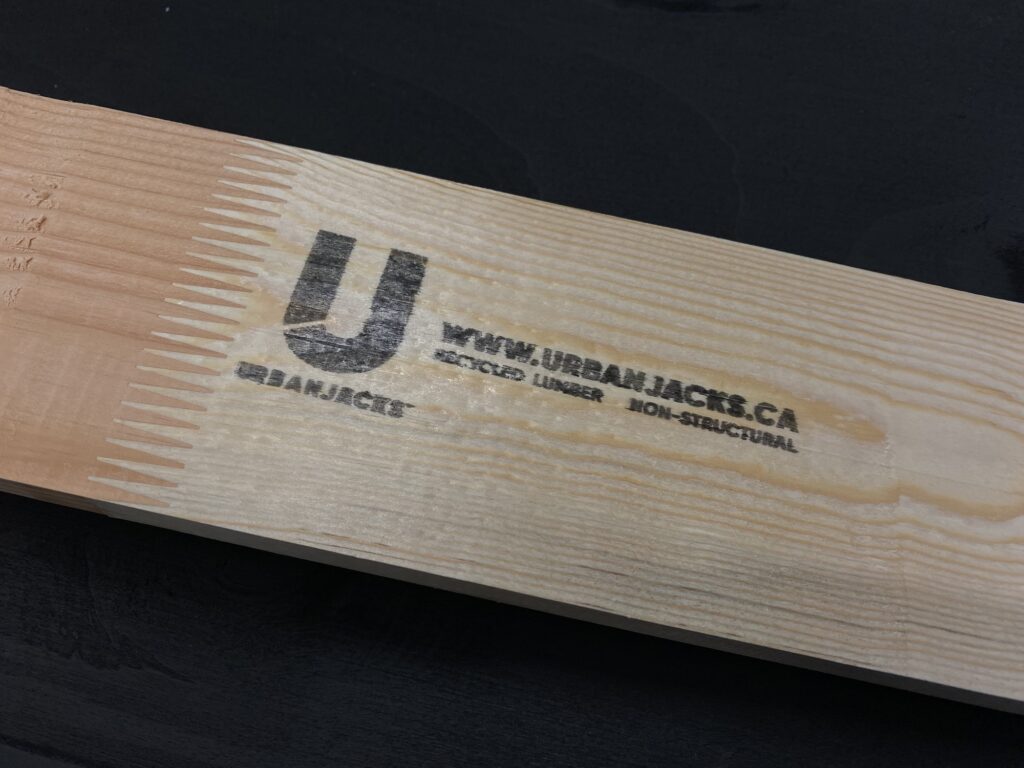Case Example: Prioritizing Repurposing, Borrowing and Upcycling in Materials
The Rain People exhibition
Museum of Vancouver
Vancouver, Canada
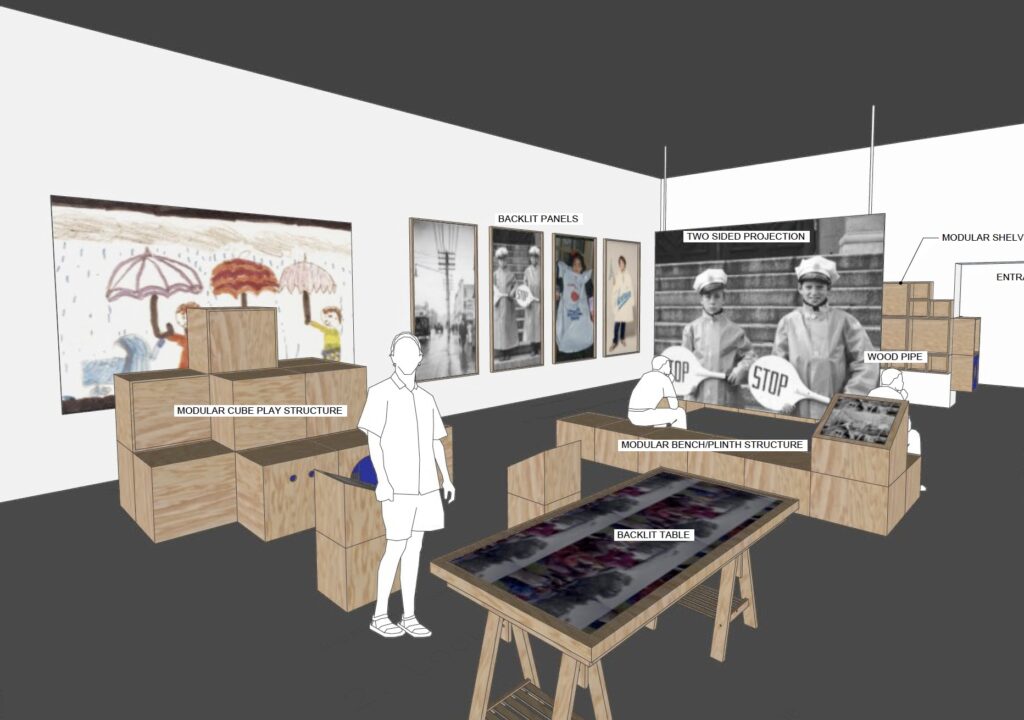
The Museum of Vancouver (MOV) began thinking about the environmental impact of its exhibitions in 2017. While MOV implemented some circular initiatives, there was an organizational desire to intensify these efforts by formally integrating circularity into their planning and production processes. The senior curator committed to planning, designing, and constructing Rain People–an exhibition exploring Vancouverites’ relationship with rain–as a model of circularity. The core team consisting of the senior curator, contract designer, MOV’s fabrication team and key content advisors, explored circularity principles and factored them in budgeting and purchasing plans.
In the planning phase, the MOV established criteria that emphasized materials reuse, to be achieved in 5 ways:
- Utilizing materials from their own inventory. The designer and curator reviewed and discussed MOV’s inventory of new and used materials before planning any new purchases.
- Prioritizing durability and future reuse for necessary new materials. MOV uses durable tarps as projection screens which align with the “rain theme”, with plans to reuse them in the future. For the new dimensional lumber, the MOV chose plywood over MDF for its reusability property and for its lower embodied global warming potential (see new materials).
- Sourcing upcycled materials, such as upcycled lumber from a local company that produces lumber from scrap collected from film and theatre sets, creating a full-circle connection.
- Borrowing material from their network of partners. The curator identified items in the exhibition design that could be (long term) borrowed and returned to the owner once the exhibition closes.
- Requesting that design solutions minimize waste from offcuts while building the exhibition and design for disassembly and modularity to support materials reuse in future.
4 circular elements identified in the planning stage of Museum of Vancouver’s Rain People exhibition:
